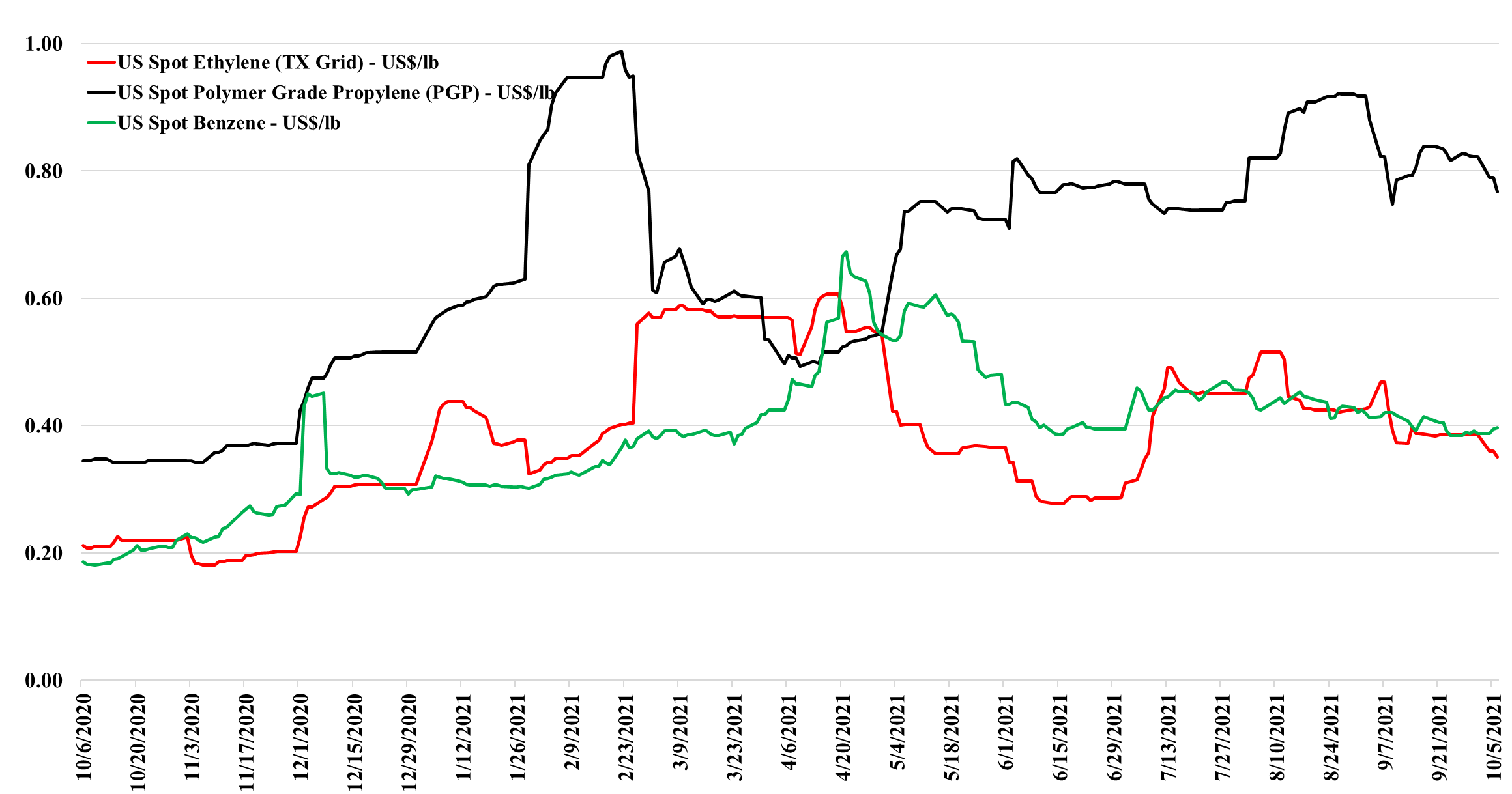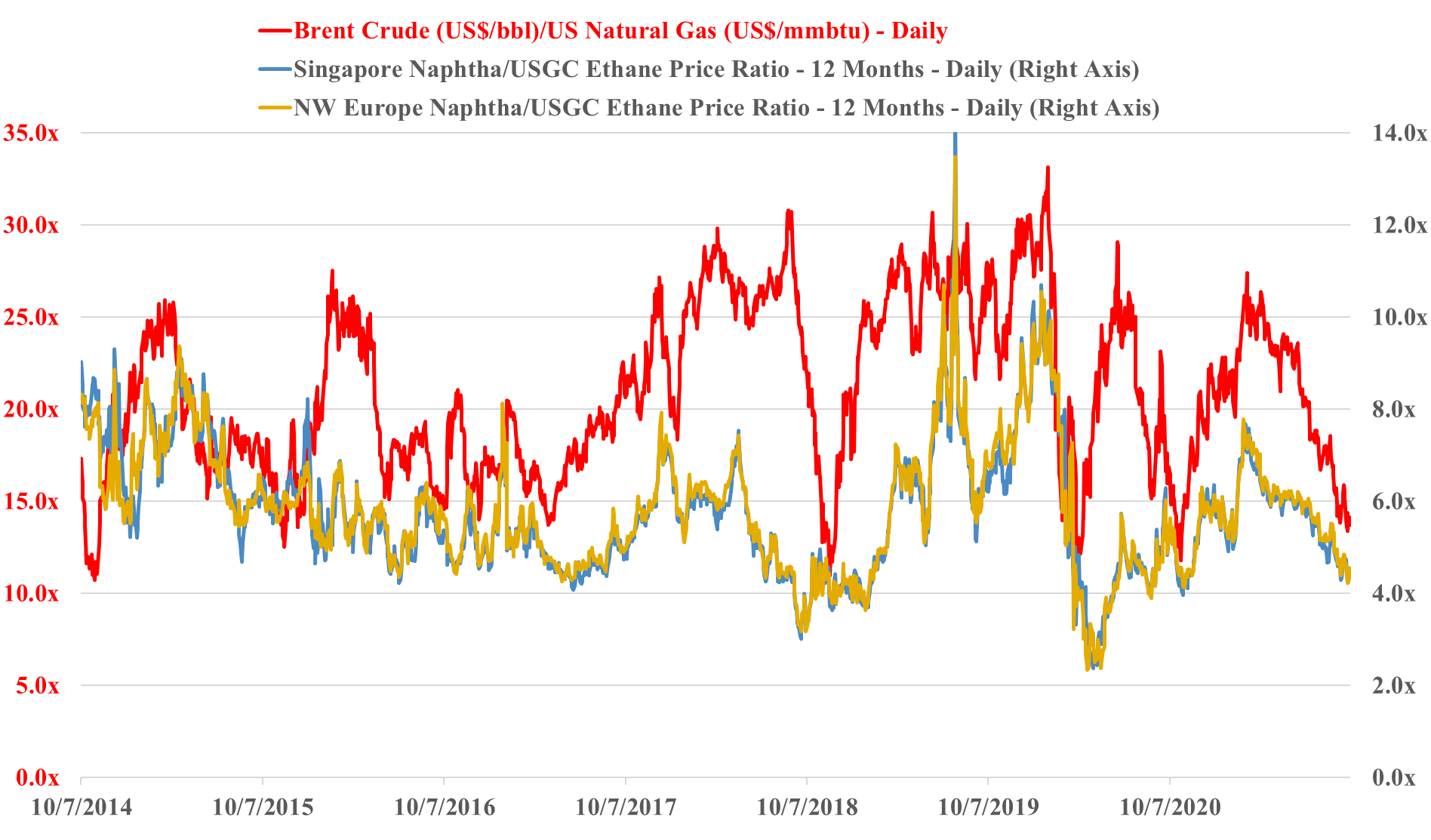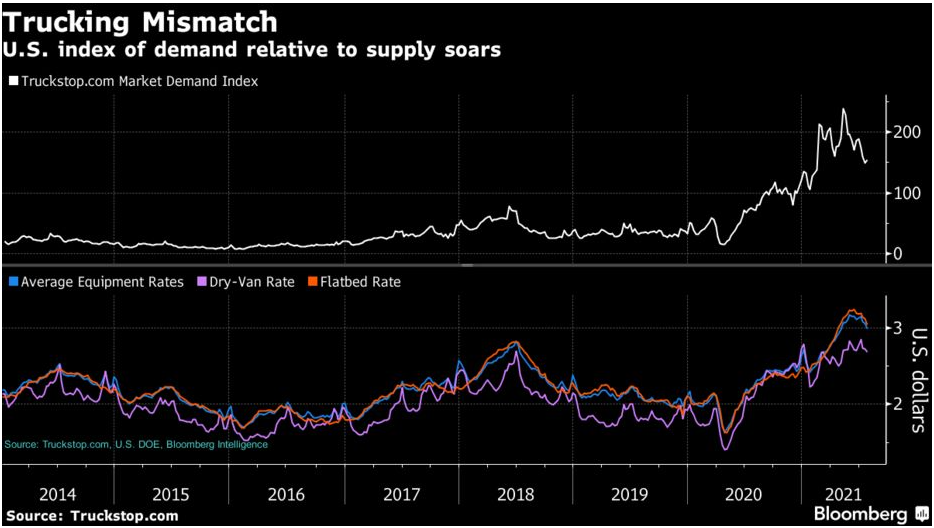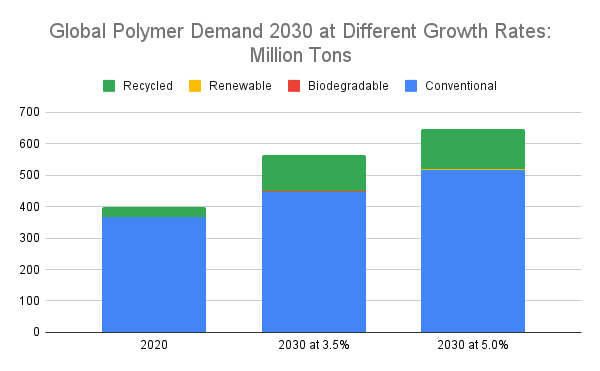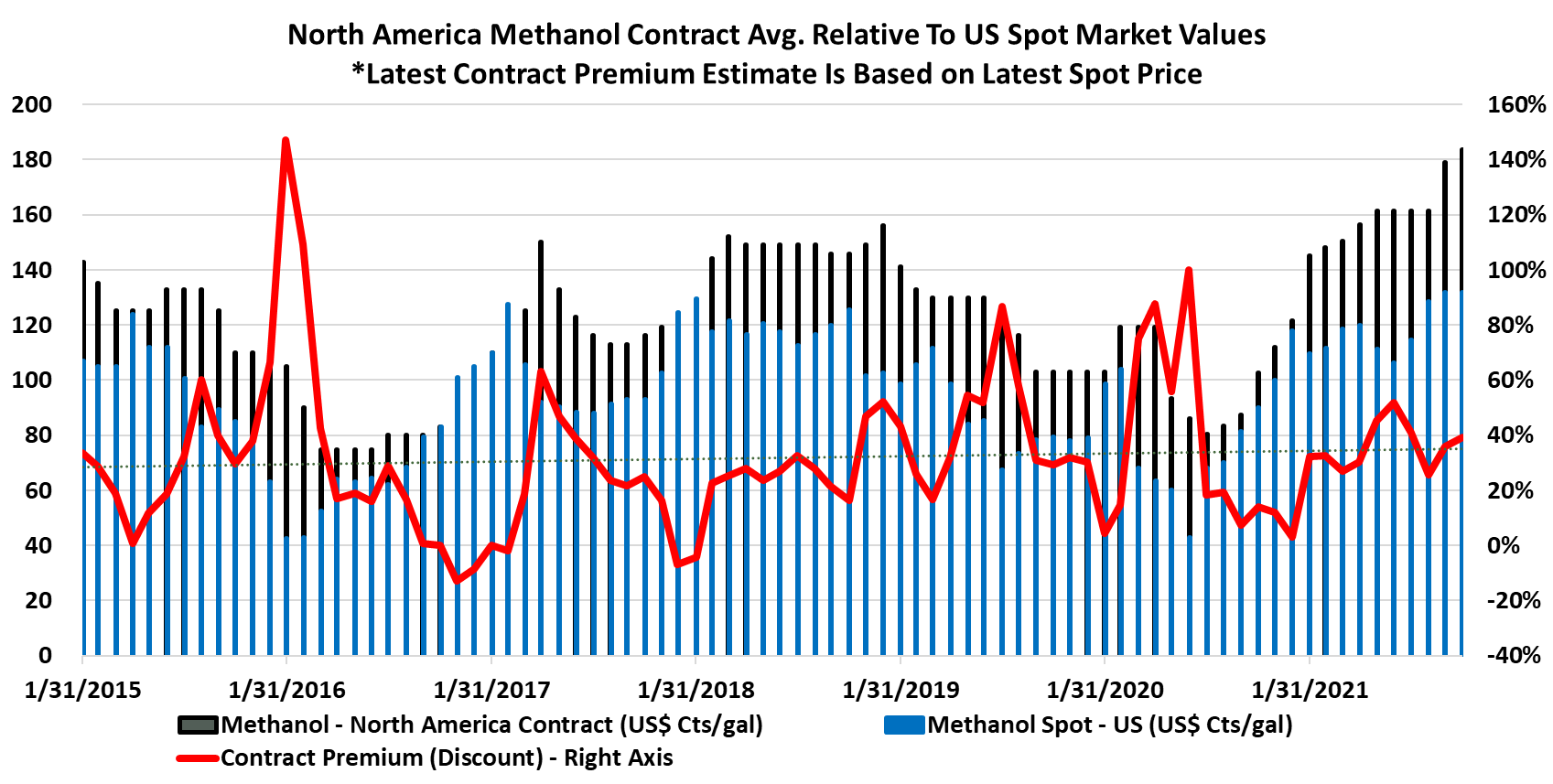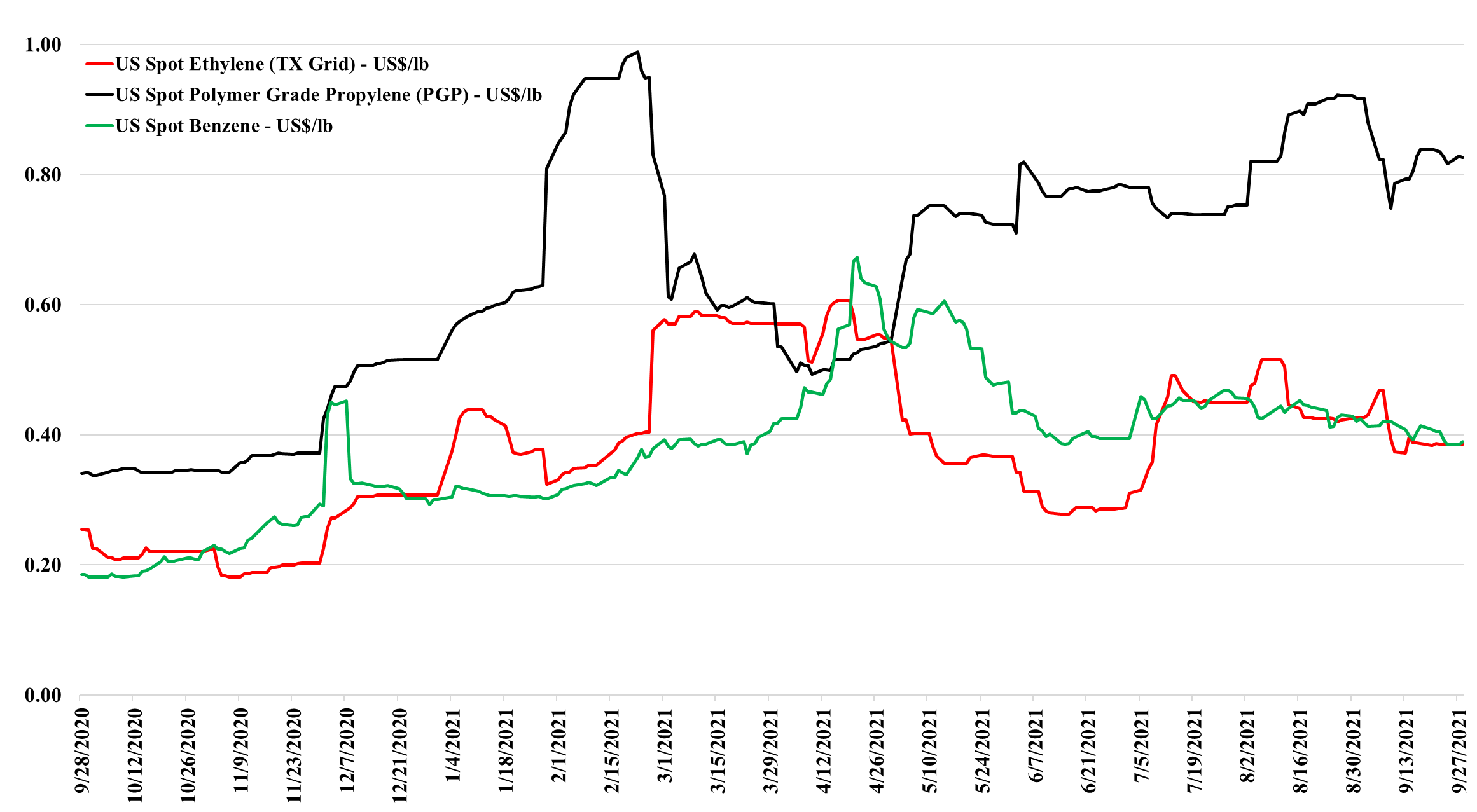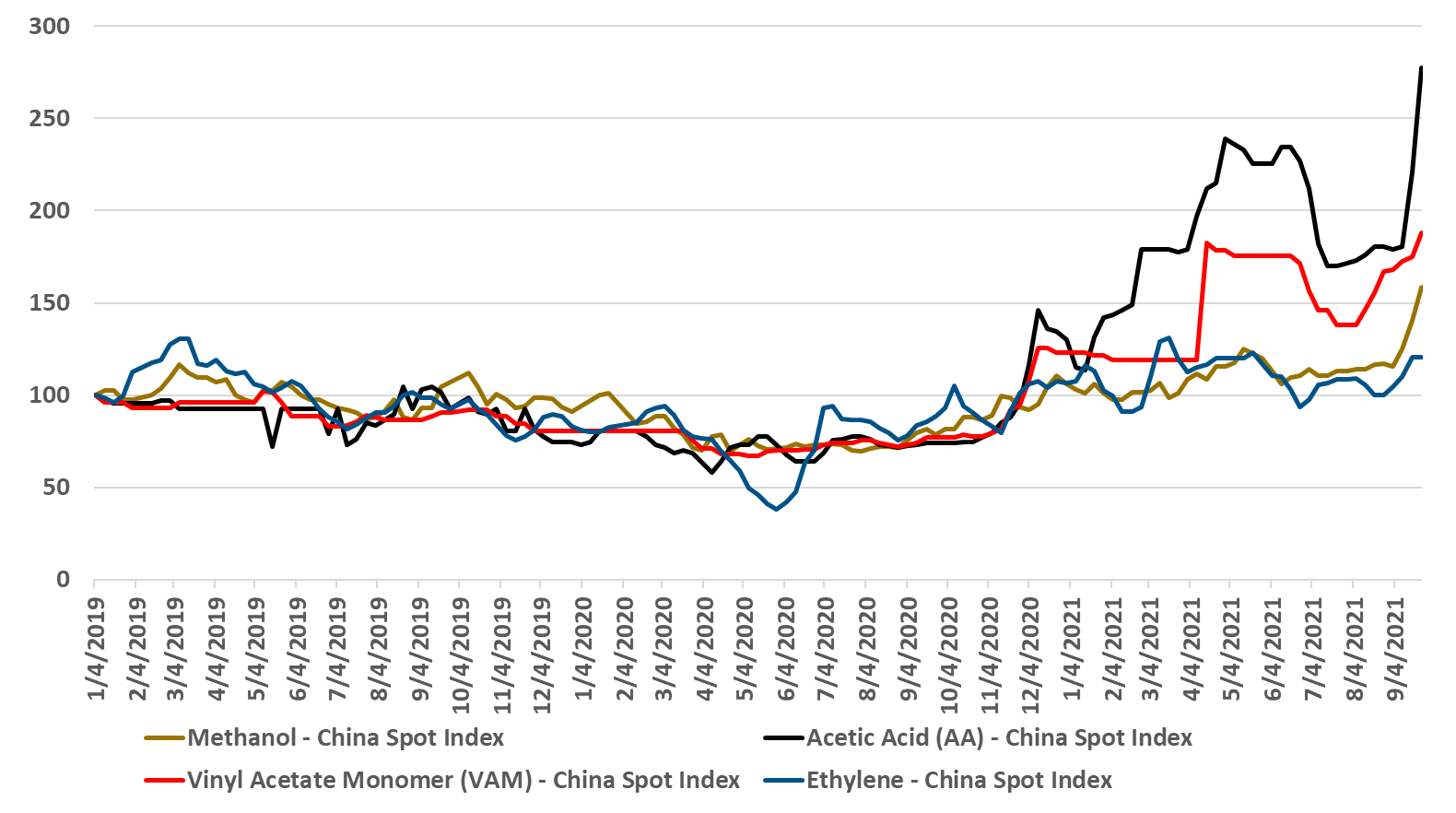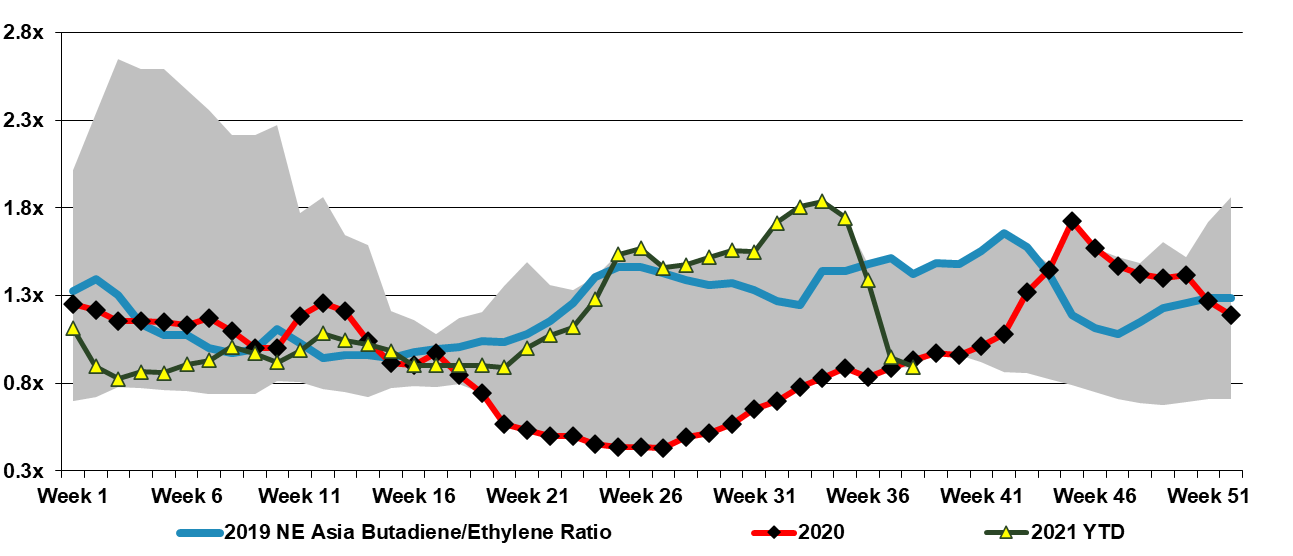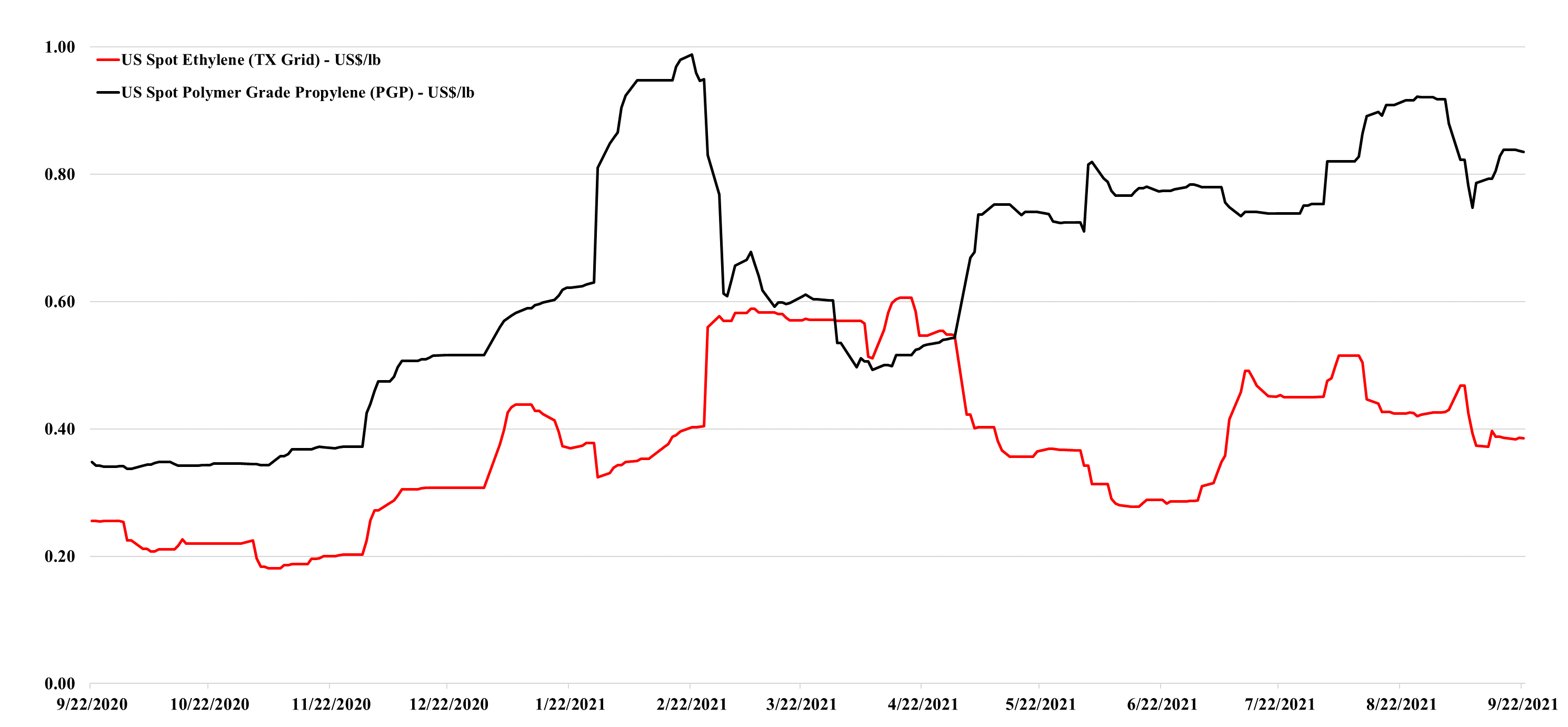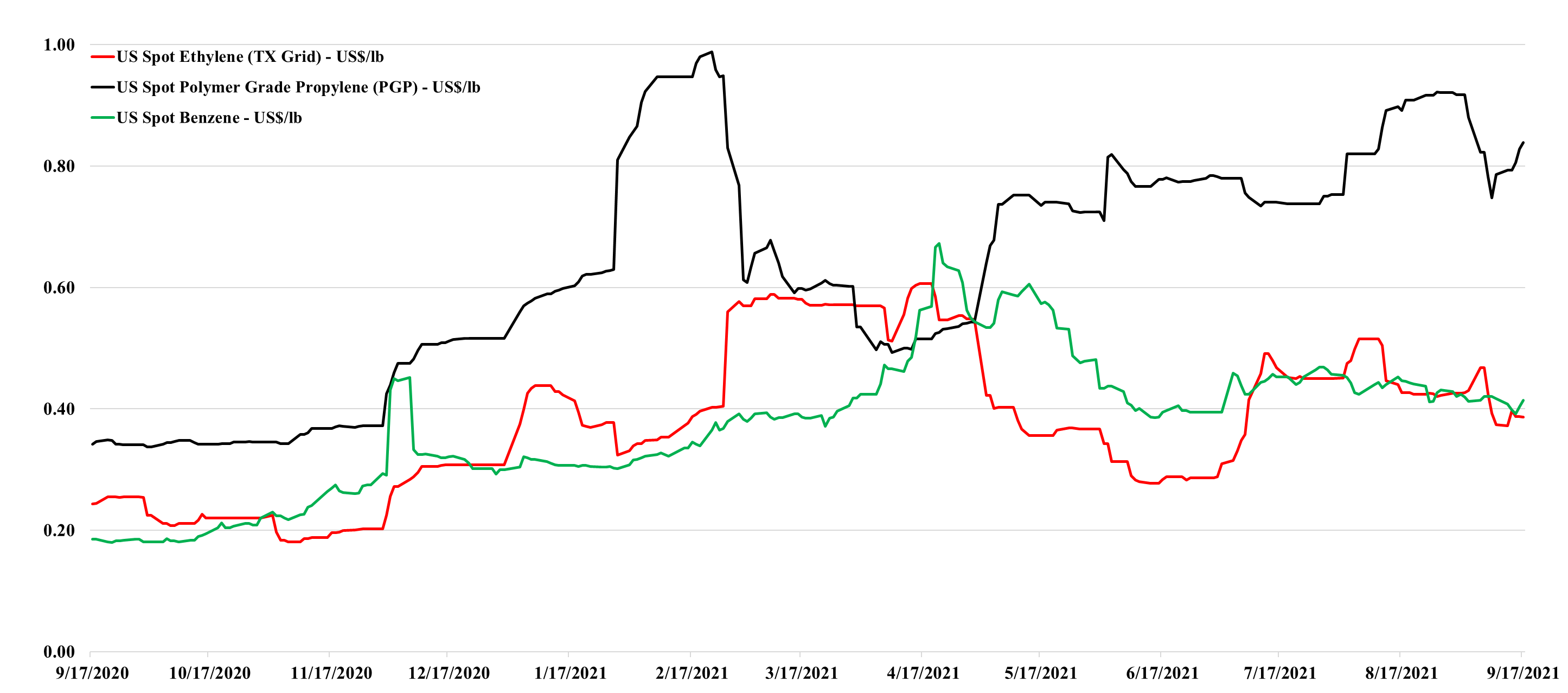The decline in propylene and ethylene values is worth consideration today as it provides proof, along with the feedstock comments in today's daily report, that US commodity chemical producers are on average facing margin pressure WoW. We noted in yesterday's research that China prices were rising amid production cuts, but demand remains a notable concern. As production rises from current levels in 1H22, this will put downward pressure on Asia chemical prices and also translate into lower US export values.
US Commodity Chemical Producers Face More Margin Pressure
Oct 6, 2021 2:32:43 PM / by Cooley May posted in Chemicals, Propylene, Ethylene, petrochemicals, feedstock, US Chemicals, specialty chemicals, commodity producers, downstream producers
US Petrochemical Cost Advantage Erodes As Natural Gas Prices Surge
Oct 5, 2021 2:38:18 PM / by Cooley May posted in Chemicals, Ethylene, petrochemicals, propane, feedstock, ethane, natural gas, NGL, naphtha, US natural gas, crude oil
The US petrochemical production cost competitive advantage reflects a sharp decline at the feedstock level. Natural gas and natural gas liquids prices have risen faster than crude oil and Ex-US naphtha values since mid-1H21. In yesterday's report we identified the disconnect between propane and ethane pricing in the US. While both are high, propane is so high that it is now unprofitable to make ethylene from propane instead of just less profitable. The direction of the lines in the exhibit below shows the changing landscape clearly, and the only reason why the US chemical industry is so much more profitable than the markets in Asia is that chemical product prices are so robust, in part because of the high cost of freight between the regions.
What's Contributing To Truck Driver Shortages & Why It Matters
Oct 5, 2021 8:31:12 AM / by Graham Copley posted in Chemicals, LNG, freight, Logistics, transportation, Shortage, truck drivers shortage, trucking
Our Sunday thematic and weekly recap report covers how the US is short of truck drivers (60,000) during a period when freight is struggling to move from congested ports – holiday buying will add more stress. This matters because we have record shipments of containers on the docks at US ports and record shipping backlogs waiting to unload as well as well documented shortages of durables in warehouses and at retailers.
The image below shows the mismatch in driver availability and trucking rates:
Lithium Is Not The Only Material We Need More Of...
Sep 30, 2021 2:45:02 PM / by Cooley May posted in Chemicals, Polymers, Energy, natural gas, solar, renewables, wind, Lithium, conventional polymers
We have discussed a theme around shortages that has been going on for months and is prevalent in many of the headlines today. It has also been a central theme of much of our energy transition work, as we think about the raw materials needed to meet the demand for solar and wind power as well as the infrastructure for hydrogen generation. The exception is lithium, where we see regular announcements around expansion projects, such as the one linked from Albemarle. The EV makers and battery storage manufacturers are doing an excellent job of encouraging investment in lithium, taking stakes in battery projects, and in some cases taking stakes in the lithium projects themselves. Offtake agreements also help projects get funding. We suspect that the offtake agreements are tactical – not aimed at buying out a source of lithium or a source of batteries but aimed at ensuring that a surplus of capacity gets built, to ensure no bottlenecks in the future.
US Methanol Sees Support From Higher US Natural Gas and Overseas Markets
Sep 29, 2021 2:14:00 PM / by Cooley May posted in Chemicals, Polyolefins, LNG, Methanol, propane, olefins, natural gas, naphtha, chemical production
The charts below show that North American methanol pricing is seeing support from higher natural gas prices as you would expect, but we are also seeing some significant price improvement in China, See more in today's daily report. If China is coal constrained, as suggested in many of the power-related stories, it may be impacting chemical production from coal at the margin. Alternatively, with LNG prices so high and imported naphtha and propane prices rising in China, the country may be using more coal at the margin to make chemicals.
A Stable Start To The Olefins Week
Sep 28, 2021 12:48:24 PM / by Cooley May posted in Chemicals, Propylene, Ethylene, Export, olefins, natural gas, NGL
We have a fairly stable week for US olefins so far – no new production disruptions, but the industry is still recovering from the storm-related shutdowns over the last 4 weeks. We still believe that there is a downside to ethylene and propylene in the US as production recovers and as demand normalizes (especially for propylene). With another month of hurricane season to go, however, it probably does not make sense to force surpluses into an export market where prices are much lower – especially for ethylene. As we have noted in the past, the right strategy in 2020 was to store the ethylene at this time rather than sell it. Inventories would likely have to rise further before those with surpluses were willing to take the cut needed to export. At the same time, rising natural gas and NGL prices are another reason to hold on to products as what you have today did not cost that much to make and costs may rise near term. See more in today's daily report.
Energy Issues In China Hurting Some Chemical Production
Sep 24, 2021 2:42:46 PM / by Cooley May posted in Chemicals, Polyolefins, Energy, Emissions, PET, PTA, Acetic Acid, Monomer, China, vinyl acetate, ethylene chain
The move by China to reduce overall energy consumption is an effort to make progress on emissions but also to curtail energy demand where there is either a shortage or an over-dependence on coal-based power generation. The immediate impact in the acetic acid chain is clear from exhibit 1 in today's daily report.If these moves in China become more widespread they could reduce the significant near-term surpluses that the country has in polyolefins, PTA and PET. Why consume either expensive or high carbon power to make products that you currently cannot sell and that are either being sold at a loss or flowing into inventory? China has the structure to make decisions like this. Should this happen we could perhaps see a recovery in polyolefins pricing and PET pricing in China – as seen for the acetic chain in the exhibit below. Keeping production in line with the demand in China is important in the very near term as the fall out from the Evergrande collapse suggests that demand into the property market has been inflated and will likely correct negatively – increasing surpluses. China can force material into the export market, if it can find containers and if it is willing to operate at break-even margins. Better to curtail production.
Butadiene in Asia: Too Much Supply & Not Enough Demand
Sep 23, 2021 1:32:20 PM / by Cooley May posted in Chemicals, Butadiene, Asia prices, ethylene capacity, butadiene supply
The recent collapse in Asia butadiene prices, as implied in the charts below is likely mostly supply-driven, given all the new heavy feed ethylene capacity that has been added in China and its impact on associated butadiene supply. On the demand side, there are negative impacts both from the overall slower growth in China and from the forced cutbacks in auto production because of the semiconductor shortages – ultimately this feeds back into tire demand. Further, with the Delta variant slowing consumer activity in Asia this has likely resulted in below trend tire replacement. See more in our daily report.
Natural Gas Short, Ethylene & Propylene Not So Much...
Sep 22, 2021 3:15:00 PM / by Cooley May posted in Chemicals, Propylene, LNG, Methanol, CO2, Ethylene, Ammonia, natural gas
The major issue with the higher natural gas prices in Europe (and rising prices globally) is the knock-on inflationary impact it will have on products that have natural gas as a feed, rather than those buying it as a fuel. The fuel buyers will take some of the hit, but will also try to pass on some of the hit, as it is generally a small part of overall product or service costs. The focus has been on ammonia/urea production because of the knock-on effect on food-grade CO2. But other products, such as methanol, would also be impacted, although there is not much methanol capacity in Europe. Higher LNG prices in Asia could encourage more coal-based methanol production, which is precisely what the increased use of LNG was supposed to prevent – replacing a high carbon footprint route with a much lower one. In our view, it is imperative that the attendees of COP26 recognize the need for (cleaner) natural gas and LNG, and enact policies to support it. This inflationary lesson is well-timed.
Volatile Pricing Obscures Underlying Direction For Chemicals & Plastics
Sep 17, 2021 12:40:41 PM / by Cooley May posted in Chemicals, Polymers, Polyolefins, Propylene, Plastics, Ethylene, polymer pricing, volatility, US producers
We continue to see significant volatility in US product prices, and this increases uncertainty around the underlying direction of the markets for the balance of the year. The recent storms have likely created enough production interruptions to take any slack that had been developing in August out of play, and while we see that in the most recent moves for ethylene and propylene – Exhibit below - it is likely more interesting to see what happens with polymer pricing as we move through the balance of September – as this will determine profits for most. While we focus on the high prices in the US more than we do the prices in Europe, it is also worth noting that European polyolefin margins remain very high, with one local producer confirming this week that records continue to be set in terms of cash flows and unit profitability. The frustration for the US producers impacted by the storm is that while their plant closures may be contributing to the tight markets, they do not get the benefit of the higher margins on the impacted facilities. While we would expect many to produce extremely high numbers for 3Q – a handful will likely lament how much they could have made had their plants operated fully. See more in today's daily report.


